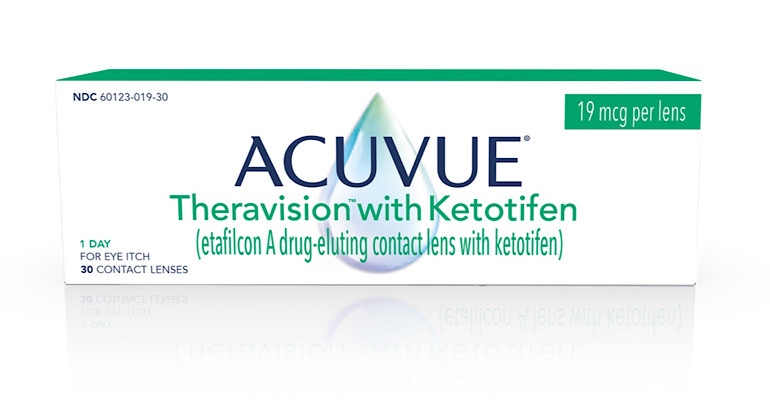J&J’s ‘Limit-Breaking’ Contact Lens Win FDA Nod
The company’s drug-eluting product treats allergic eye itch for contact lens wearers and reduces the need for eyedrops.
March 2, 2022

Johnson and Johnson’s Vision Care unit could make eyedrops obsolete for contact lens wearers suffering from allergic eye itch. The New Brunswick, NJ-based company said it won FDA approval for its Acuvue Theravision with Ketotifen, a drug-eluting contact lens that goes beyond the limit of traditional eyewear.
FDA’s approval of the drug-eluting lens comes almost a year after the product was greenlit for use by the Japanese Ministry of Health.
In an interview with MD+DI, Brian Pall, OD, MS, FAAO, Director, Clinical Science, Johnson & Johnson Vision Care said there was a lot of pent-up demand for the product. He noted the reason the product was so popular because it’s very “intuitive” and very “logical.”
“It all starts with the unmet need,” Pall told MD+DI. “Right now, 40% of contact lens wearers suffer from itchy-allergy-eyes. When we talk to them and ask them about when they have these itchy-allergy-eyes when wearing contact lenses about 80% say they’re frustrated. It really impacts their quality of life – the ability to do the things they want to do…”
Each lens contains 19 mcg of ketotifen – a well-established antihistamine. The vision care unit worked with J&J’s Janssen for the antihistamine component.
“This was a great example of a very strong collaboration between J&J Vision Care, Janssen, and other strategic partners that we’ve worked with,” Pall said. “Something this breakthrough doesn’t happen … organically in just a small team of people. It’s a mass effort to make this happen.”
News of the FDA approval follows closely behind positive Phase 3 clinical studies published in the journal Cornea. The Phase 3 clinical studies showed a clinically and statistically meaningful reduction in itchy allergy eyes as quickly as three minutes after lens insertion and lasting up to 12 hours; however, the lens may be worn for longer than 12 hours for vision correction.
Companies have spent 60 years trying to develop medication-releasing contact lenses and many have failed. Pall said that this hasn’t been an easy process and spoke of the difficulty.
“You have a couple of different challenges,” he said. “One is trying to incorporate the medication into the lens. There [must] be a unique synergy and compatibility between the medication and contact lens material. You can’t just pick any drug and any contact lens material because of the chemistry of the two. There has to be compatibility.”
He added, “If they are highly compatible then the other issue is the drug might not release from that polymer or that material. You have to find this unique situation where the [drugs] are compatible enough to be incorporated seamlessly within the material itself. But when it’s placed on the eye it has to elute or be released.”
Quick to point out that he wasn’t talking about a specific project from the company, Pall pointed to the potential of contact lenses in the future.
“The next breakthrough will be how can we continue to bring innovation to really help to enhance, to correct, and restore people’s vision,” Pall said. “That’s what gets me excited to be an R&D person – to be able to be on that cutting edge and really look for these difficult challenges on how to make patients’ lives better through contact lenses or other medical devices.”
About the Author(s)
You May Also Like



